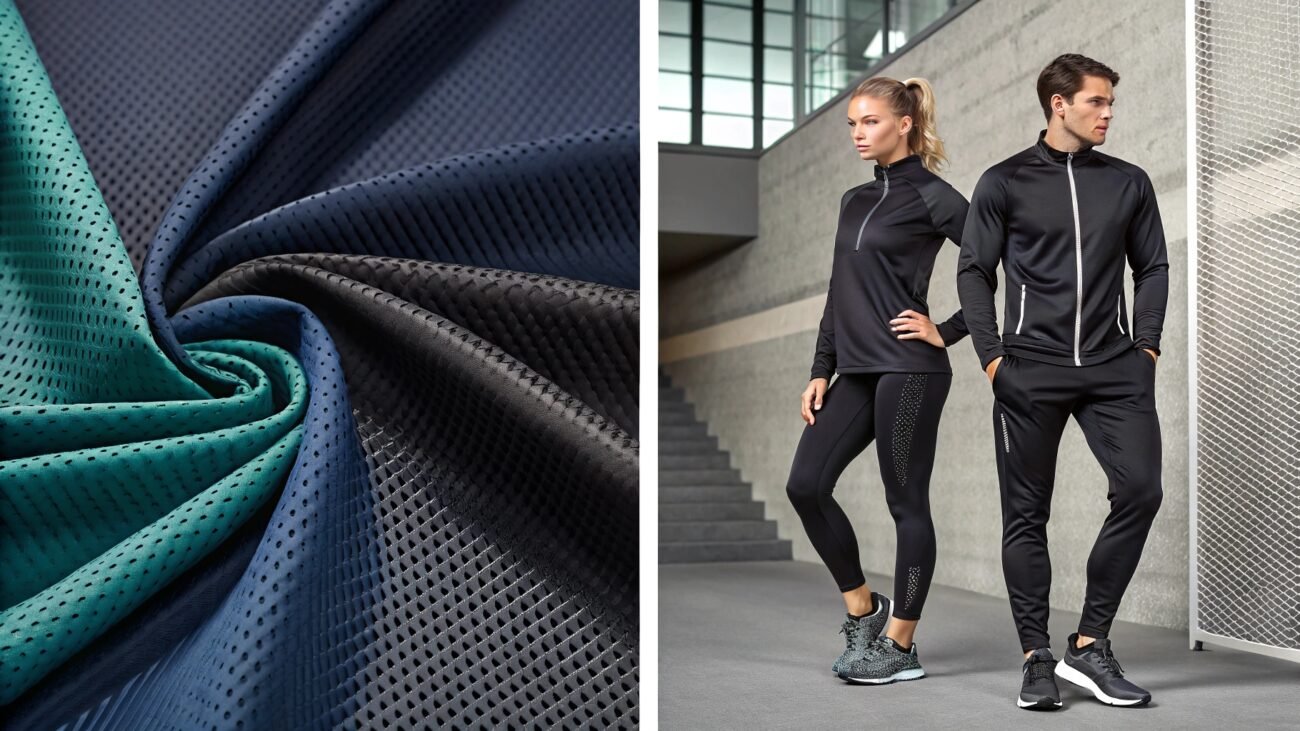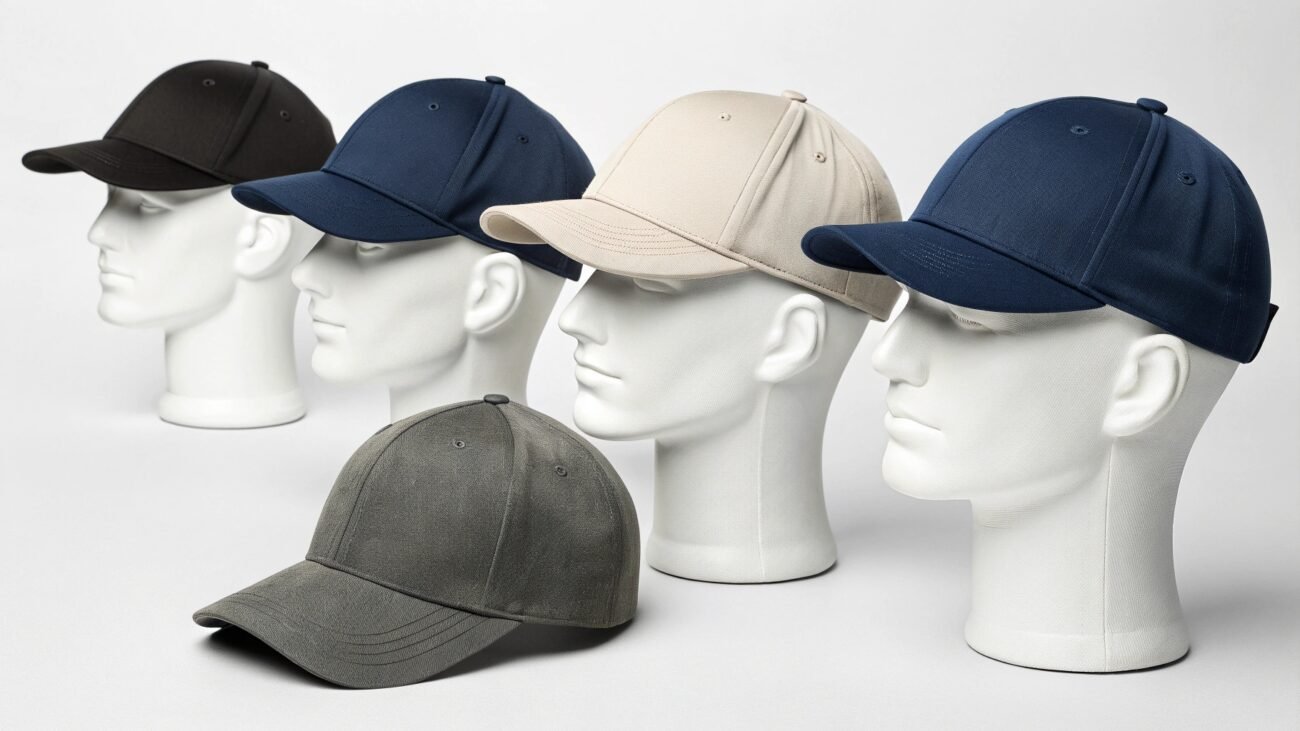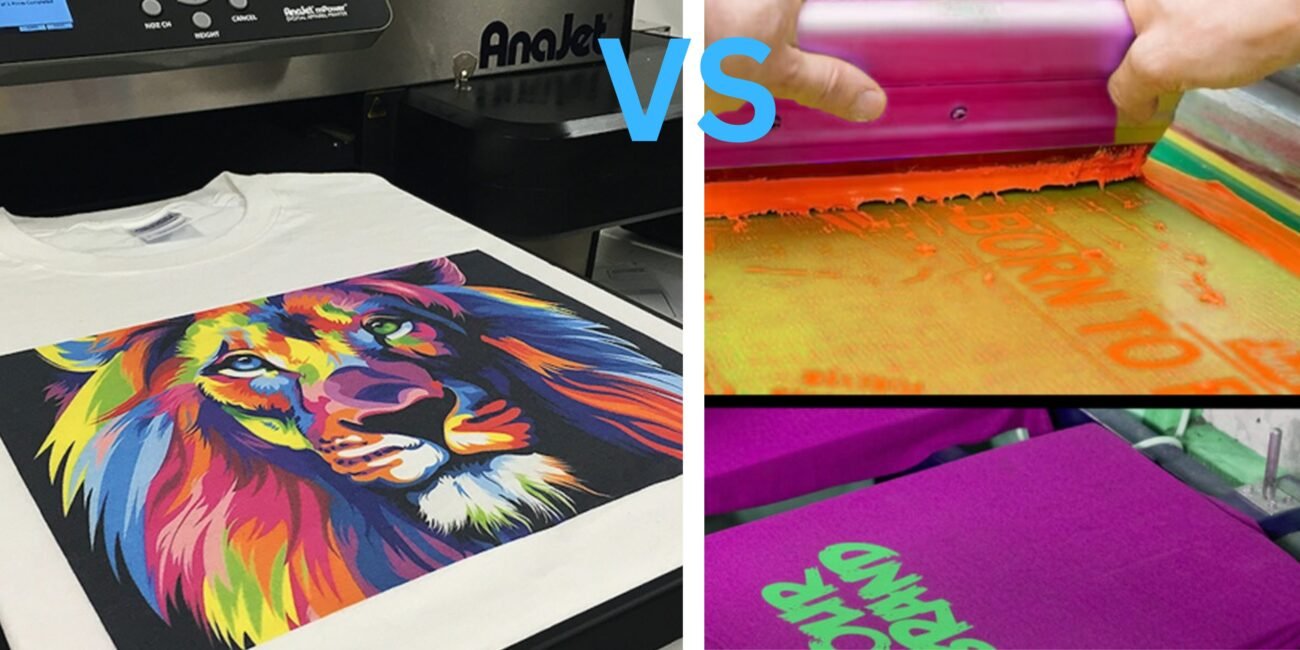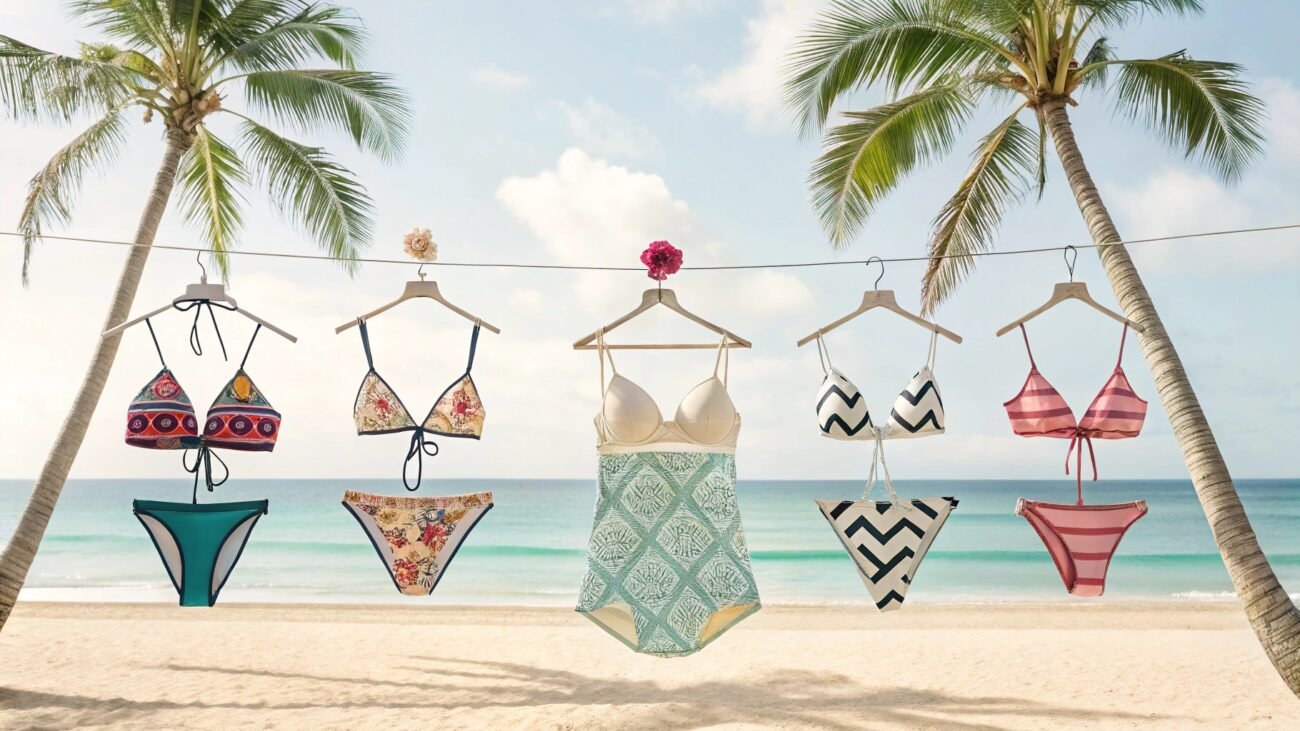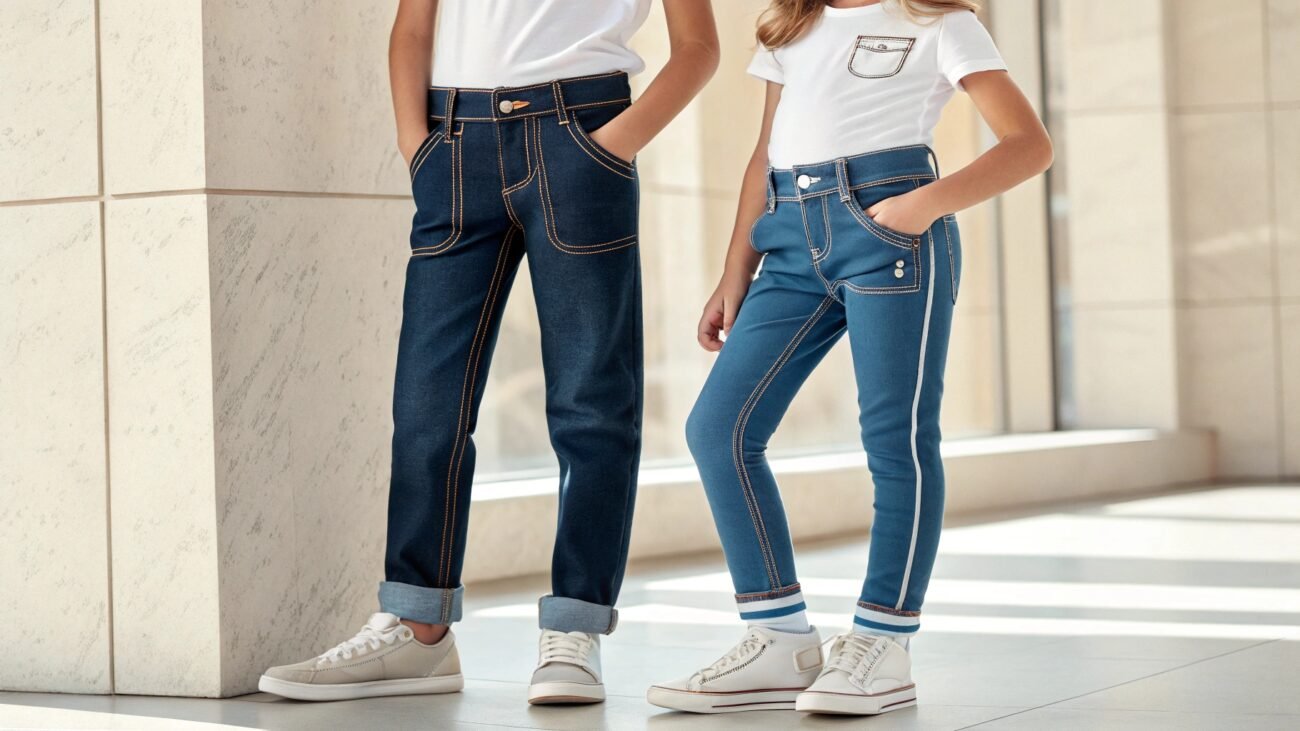Are you a gym enthusiast? Then, at least once, you may ask yourself or your peers which fabric is best for gym clothes. Well, it is a really simple answer. Look out for fabrics or even already prepared clothes for the following properties:
Table of Contents
Toggle- High Resiliency & Comfort
- Flexible & Muscles support fitting
- Quick drying & Sweat managing
- Lightweightness
In this gym clothes fabric guide, the main focus is to provide readers with profound knowledge about a variety of fabric options for gym wear and how each type results in differently functional garments.
Quick Overview of Blog
You can still get a quick summary if you are running errands or being late; here’s everything about Gymwear fabrics in 5 points!
- Gymwear fabrics are characterized by their unique serviceability of being stretchable, durable and comfortable for long workout hours.
- Although Activewear & Gymwear are considered to be the same, there is one difference that sets them apart: Gym clothes are specifically made for indoor activities, meaning they don’t necessarily have to be UV-guardian.
- Multiple types of fabrics are available in the market, such as Polyester, Nylon and Spandex, and each kind, when utilized correctly, brings out different qualities in clothes.
- Depending on your preferences and budget, different fabric types can potentially become the “best fabric for gym wear” for you.
- Starting your own brand is as easy as it gets; you just have to identify gaps in the market and then maintain your business on those gaps.
Are Gymwear and Activewear the Same?
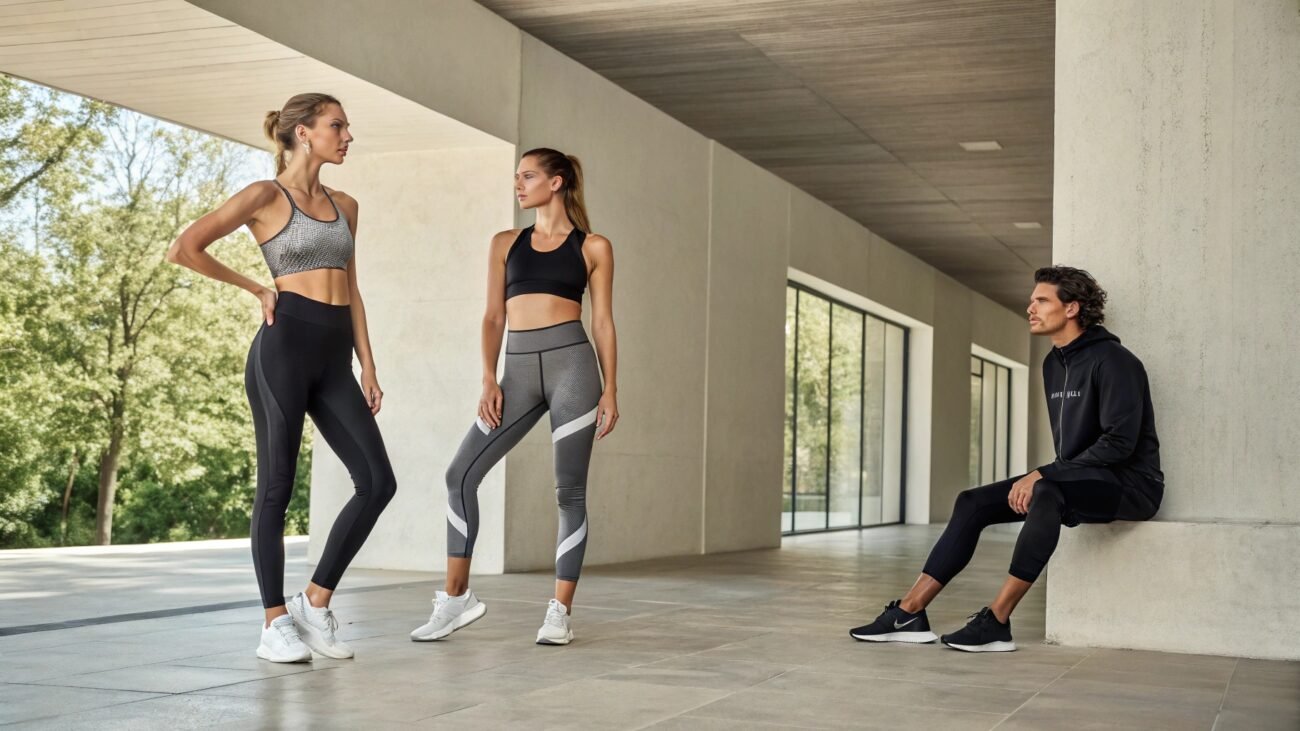
Before answering this question, it is important to understand both definitions on their own.
- Gymwear is those sets of clothes that are worn for indoor gyming sessions and can be classified as casual or High-impact.
- Whereas when we talk about Activewear clothes line-up, each and every garment meant for either low-impact, high-impact, or professional competitions comes under this term.
By the above-mentioned explanation, you might think there is a high distinction between 2 terminologies, but the truth is that gym wear, sportswear, and activewear are all a set of interchangeable terms used to describe the same category of clothes.
However, to create a barrier for better understanding, you can say Gymwear is Activewear, but Activewear is not Gymwear… Why? If you had read both definitions well, then you would come to know that activewear is actually sub-categorized to become gym apparel.
Best Fabric for Gymwear
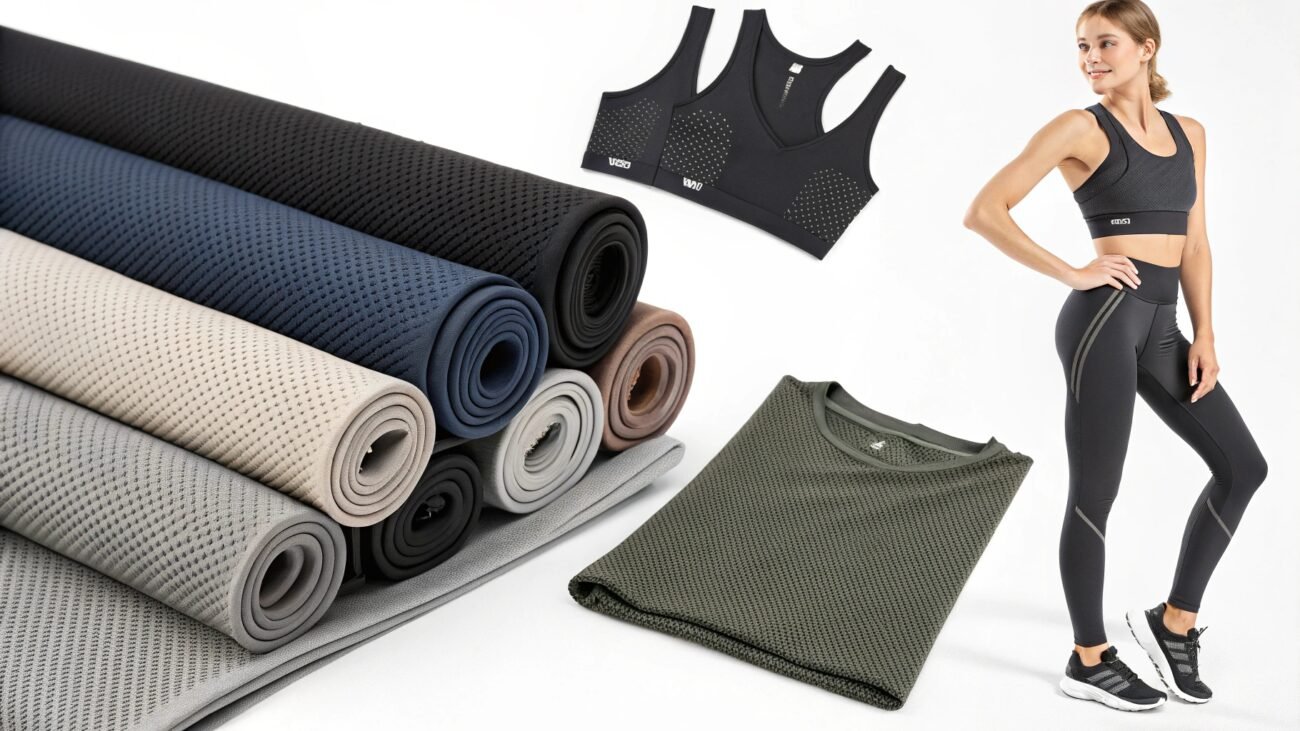
Polyester:
Polyester is a nominal fabric option for making high-quality gym hoodies as due to it being made of plastic fibres, not only is polyester excellent for everyday wear and tear but also wicks moisture, ensuring the wearer is dry from all sweat and grime.
Although not as securely fitted as clothes made from spandex, it still comes with sizable flexibility and allows free movement during a workout.
High Value: Polyester resists shrinking even after numerous washes and is also excellent at holding printed designs, meaning polyester should be your go-to fabric for making custom clothes such as Tracksuits and Sweatpants.
Nylon:
Nylon is another synthetic material prized for its higher tensile strength and shape-retaining qualities. It is an excellent choice for designing high-impact clothes such as crop tops and sports bras due to being:
- Highly soft against the body
- Quick drying
- Elastic for snug fitting.
Are Nylon-Made Clothes Better Than Polyester Ones?
Yes & No! Superior fabric relies heavily on the intended use case. Suppose you want to make highly efficient clothes; going for nylon is a finer choice than polyester. However, if affordability and customization are your primary concern, then Polyester is actually a better option.
Spandex:
Also known as Lycra and Elastane, it is the highly elastic artificial fibre used for high-impact fitness apparel like compressional wear, tops and bottoms, basically in every garment that needs to be highly movement facilitating along with secure fitting.
However, spandex can be used in its pure form; it always has to be blended with other textiles to be structurally viable.
Fact about Spandex: Just a small amount of spandex can completely transform a fabric’s entire functionality spectrum. Take cotton, for example; it is not stretchable, but when combined with spandex, it becomes very elastic and flexible.
Fabric Blends:
In the Gymwear industry, many designers and entrepreneurs opt for blended options for higher serviceability and relatively lower prices. Some examples are listed below!
Polyester-Spandex Blend (95% – 5%):
Perhaps the most common blend for gym wear, owing to its high-performance features like moisture-wicking, quick-drying and durability. The incorporation of spandex enhances polyester’s inherent stretch and flexibility, which makes it a perfect choice for exquisite leggings and shorts.
Nylon-Spandex Blend (80% – 20%):
Nylon on its own is a very favoured fabric for fitness apparel, but when spandex is blended, the entire story changes. You can say nylon becomes “Super Nylon” with high durability, silk-like feel and abrasion resistance with the top level of stretch and shape recovery. This material is perfect for making compressional crop tops and premium indoor swimming gear.
Polyester-Nylon Blend (50% – 50%):
If affordability is concerned but you want a bit more operability than polyester, then poly-nylon is a great option. Not only is it budget-friendly, but it can be used to make performance-centred shorts and training tops where a combination of tensile strength and moisture management is needed.
Can Cotton Be Worn for Gym?
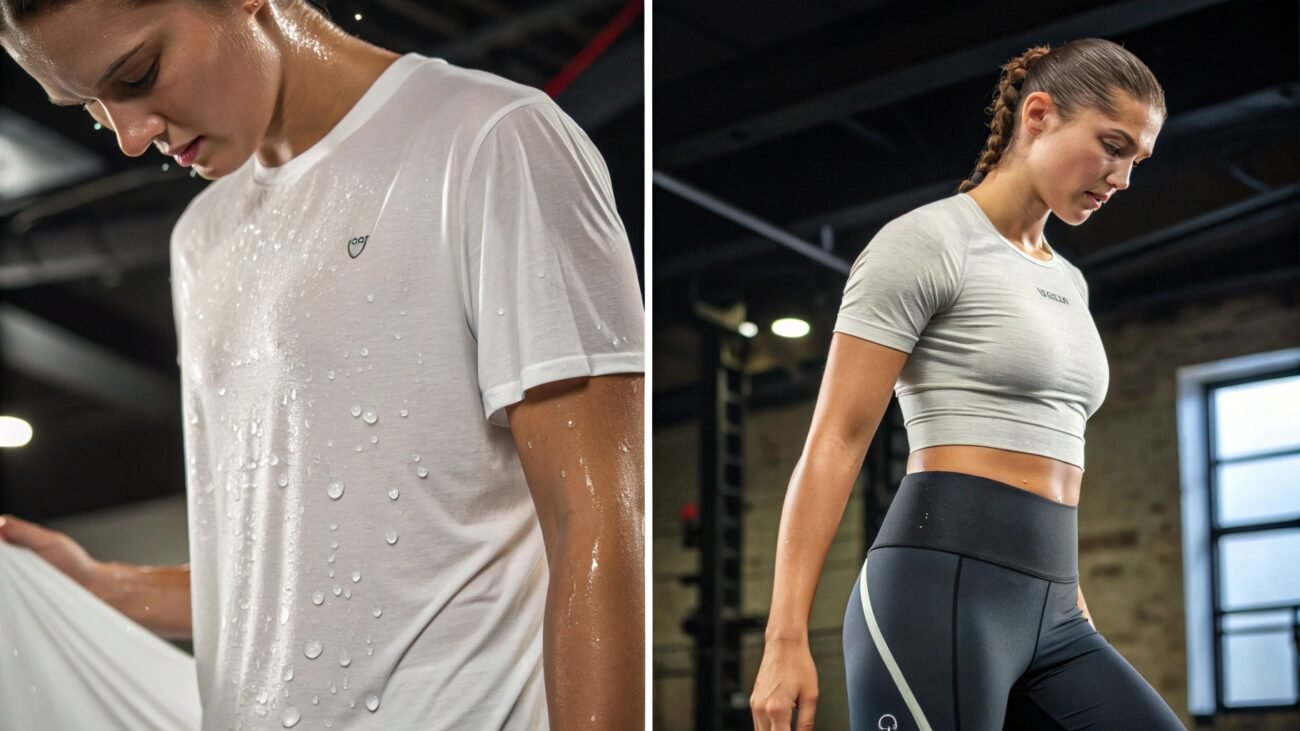
Technically, cotton can be worn for workout sessions, but you will find out why it is not used in the fitness industry. Cotton is very breathable, which is very demanding; however, it fails to provide enough value owing to a set of these characteristics:
- Not sturdier.
- It can’t be stretched.
- Loose structure over time.
- Can not manage body sweat.
However, if it’s blended with spandex in a ratio of (95% to 5%), then cotton can be used for athletic reasons. In fact, it becomes such a great option that its scope can be extended out of the athleisure industry into everyday lifestyle
How to Choose Performance Fabrics for Fitness
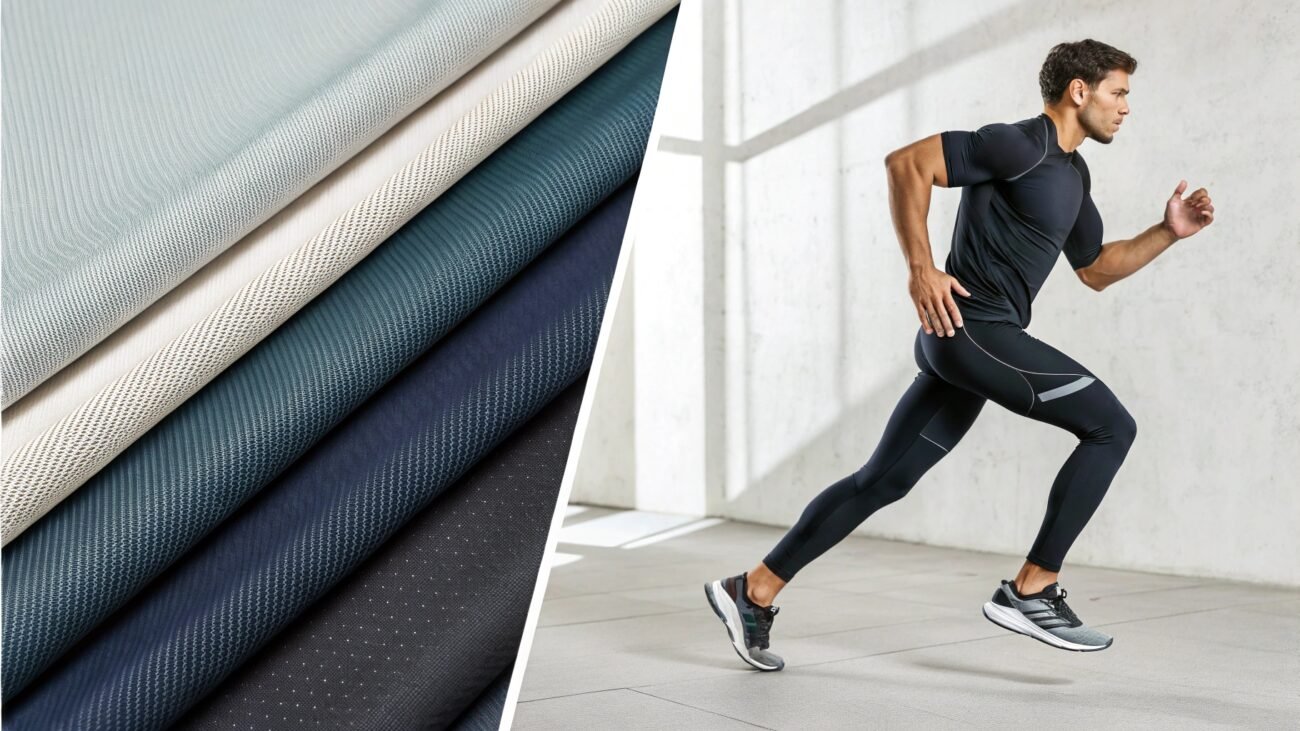
Deciding upon the best workout clothes material can be a little complicated, but with the right guidance, you can easily make an informed choice regarding your fitness apparel brand or fitness journey.
Consider the following points to figure out which fabric is good for workout:
1) Robustness:
When selecting fabric material for your gym wear, always be considerate about its longevity. Gymwear, no matter whether expensive or cheap, should always be durable and long-lasting. However, for business persons, you can experiment around with different sturdier materials to see which one captures your brand’s image more.
Here’s how: There are gym clothes that are highly expensive but will also last up to a year or two, and similarly, there are people selling clothes that are quick to tear but won’t break the bank.
2) Weight of Fabric:
Fabric’s thickness or GSM plays a huge role in the final operability of clothes. If you want lightweight clothes, then go for lower GSM and similarly opt for higher GSM for heavy support clothes, but remember you can only choose between 100-280. Otherwise, it will either be too thin or too thick to be considered proper gym wear.
Related Read: High-Quality GSM for Hoodies Detailed Guide 2025
3) Budget:
This is the only factor that can directly influence your choice, If your budget is without limitation, then you can explore premium options like nylon spandex for your gym clothes collection; otherwise, you are limited to options like polyester and its associated blends with spandex and nylon.
Nonetheless, there are some high-capacity manufacturers that have streamlined their fabric sourcing, which in turn allows ease of inexpensiveness for consumers. One such example is Private label clothing manufacturers, which are vogue custom clothing makers and have been in business for decades now. They are not price-friendly but have a history of producing market-leading clothes, including gymwear.
4) Garment Design:
The type of garment also limits the material choice, as you can not just use any fabric for any garment. Suppose you want to make durable moisture-wicking underwear, then the smartest decision from your side could be about nylon spandex. Polyester or its blends, on the other hand, would prove to be very awkward and uncomfortable.
As a matter of fact, take a look at the table to see which garments are best designed by which fitness wear fabric types:
| Gym Textile Types | Best Garment Types |
|---|---|
| Polyester | Hoodies, T-shirts, Track pants & Shorts |
| Nylon | Leggings, Sports bras & Compression Tops |
| Poly-spandex | Leggings, Sports bras & Compression pads |
| Nylon-polyester | Leggings, Sports Bras, One-piece Suits |
| Nylon-spandex | Gym T-shirts & Yoga Pants |
| Cotton-spandex | Hoodies, Windbreakers & Gym bags |
How to Design Your Own Fitness Line-up?
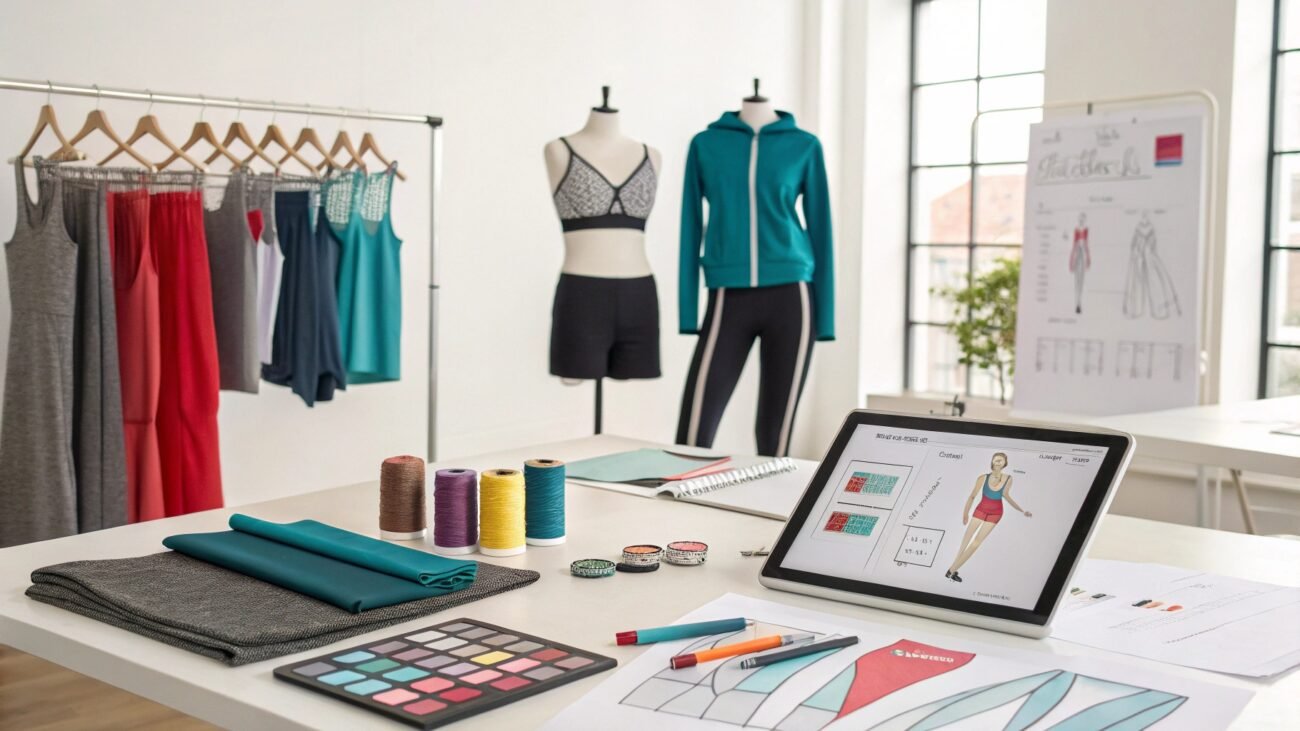
Have you understood the fabric types in the world of fitness? If yes, then there is a high possibility that you might want to start your brand or yet still need guidance in building one.
Creating your own fitness line-up might seem hard, but if you approach it step by step, then it really is not that mind-numbing. However, it still requires a lot of work. Any brand requires foundational work and then product formulation. Here’s a quick guide on how you can start your own brand!
1) Identifying Gaps & Designing your Products:
Analyze your market and come up with at least one aspect on which you can provide value, then design your products in accordance to fill that gap. For example, If there are just polyester-based hoodies, then you can try to experiment around with cotton-spandex hoodies in order to provide an even greater and breathable experience.
2) Finding the Right Manufacturers & Negotiating MOQs:
After designing your products, now comes the hard part. You will be presented with hundreds and thousands of manufacturers who will assure you about their services and quality standards, but you will be very attentive and look out for their expertise, policies and even past work portfolio before making any decision. Also, by discussing MOQs, you can effectively cut final prices.
Want to Start Your Gymwear Brand?
PLCM is a highly respected manufacturing facility and aims to help startups with low MOQs of just 50 pcs at market challenging prices. We are your go-to vendors for every custom clothing solution!
Valuable Read: A Complete Overview: Understanding MOQs in Private Label Manufacturing
3) Marketing and Advertising:
After finalizing your products, your next step is to set up a marketing campaign. You can offer discounts on your clothes and collaborate with social media influencers to garner traffic for your brand. However, always run a background check on influencers because if some background un-savory story pops up, then chances are your brand will get heat as well.
4) Business Management:
Lastly, your only concern is to maintain your sales inventory and keep up with trends, proper business management will allow for longer financial viability for your business. If you are not sure about this, then you can also hire a professional for this.
For a complete guide, you can check out this blog focused on starting your own brand!
Click here: Clothing Manufacturers For Startups: From Development to Production.
Recurring Questions about Workout Clothing Materials
1) What is the absolute best fabric for gym wear?
There is not one single best fabric type out there; it depends heavily on your preferences and workout regime. However, materials such as poly-spandex and nylon-spandex are considered top choices in general consensus due to their excellent serviceability of being moisture-wicking and durable.
2) What does moisture wicking mean?
Moisture wicking means pulling sweat away from the skin and transferring it to the outer surface of the fabric. This phenomenon allows sweat to evaporate quickly, which keeps you dry and chafing-free for a pleasant workout experience.
3) Are there any natural fibres that work well in gym wear?
Synthetic options widely dominate this industry, but there are some gym wear with in-weaved merino wool and cotton to make it breathable and hypoallergenic in gym sessions.

